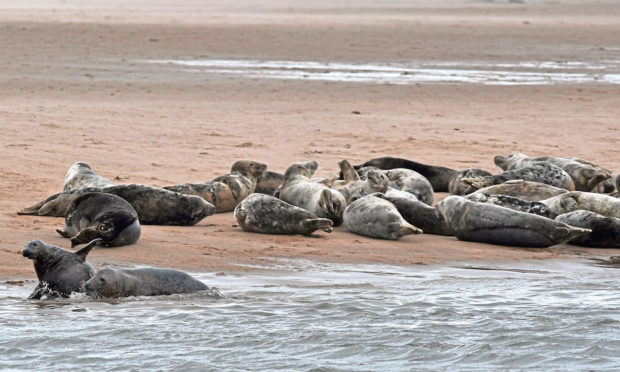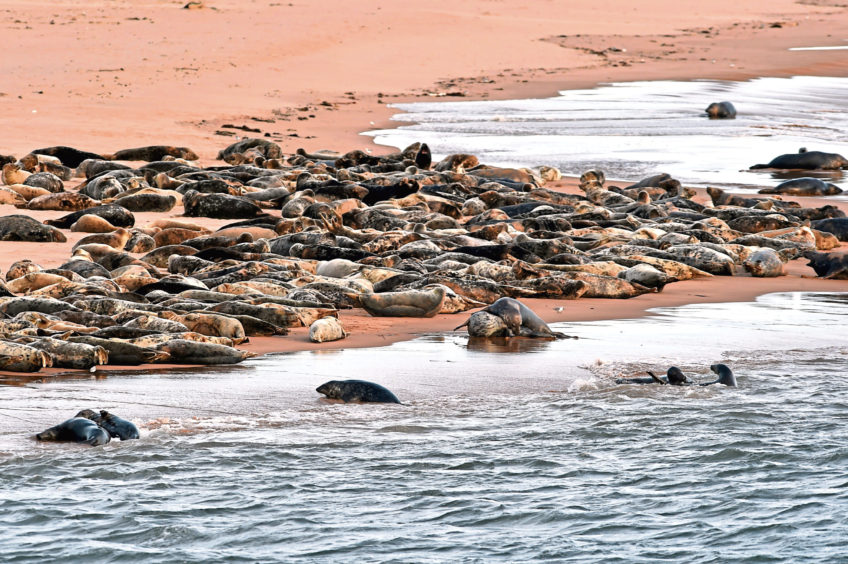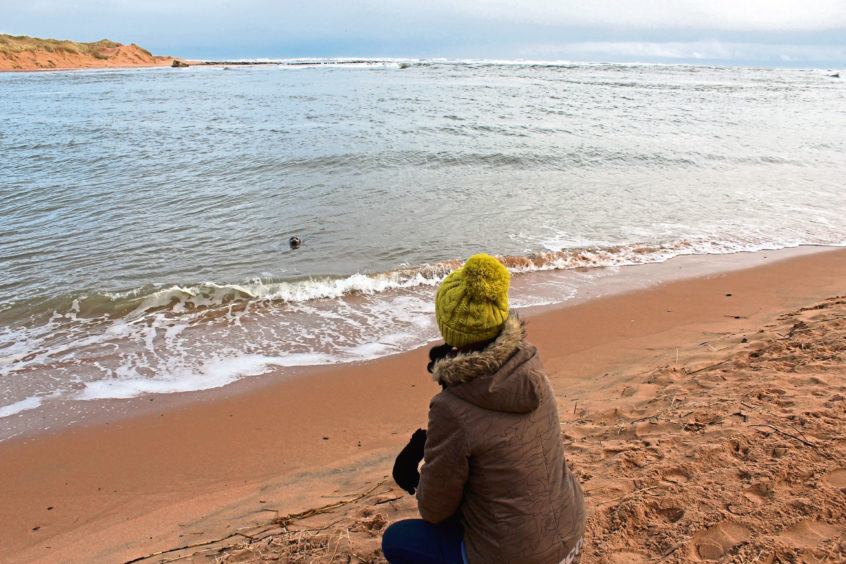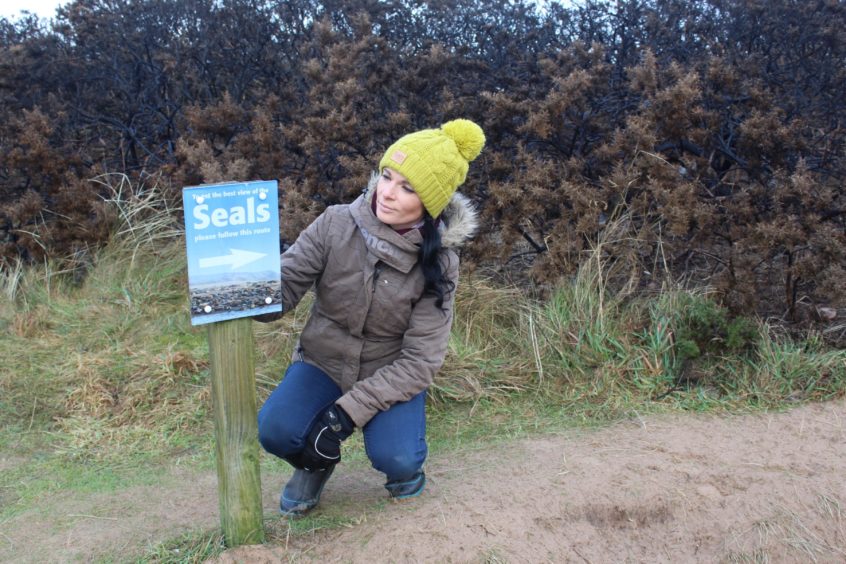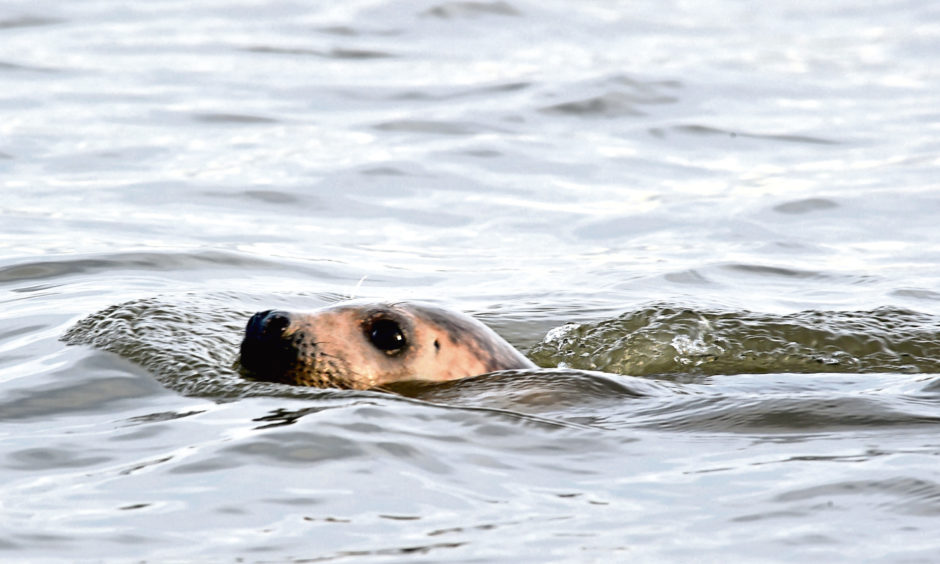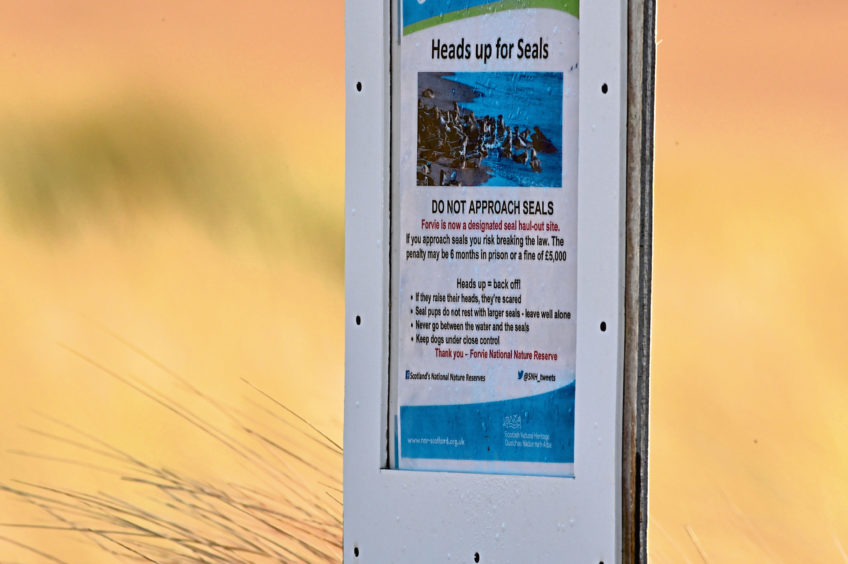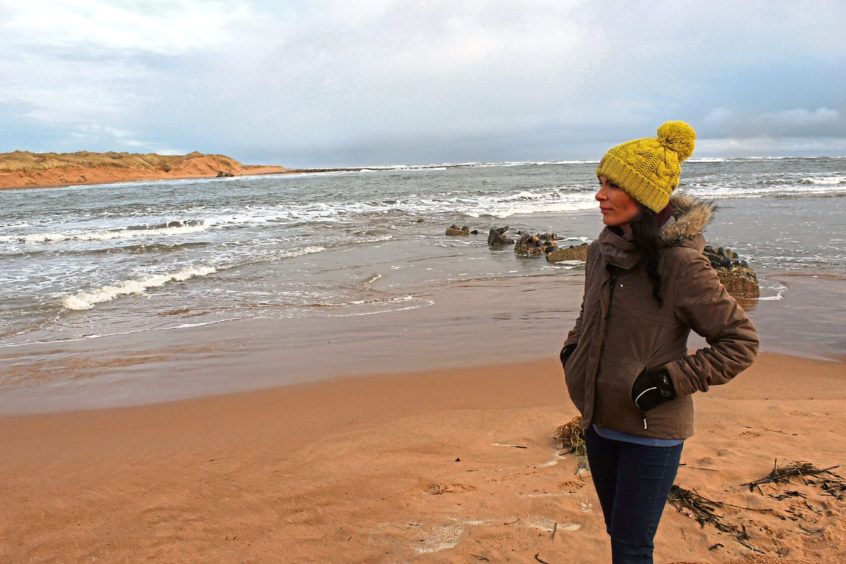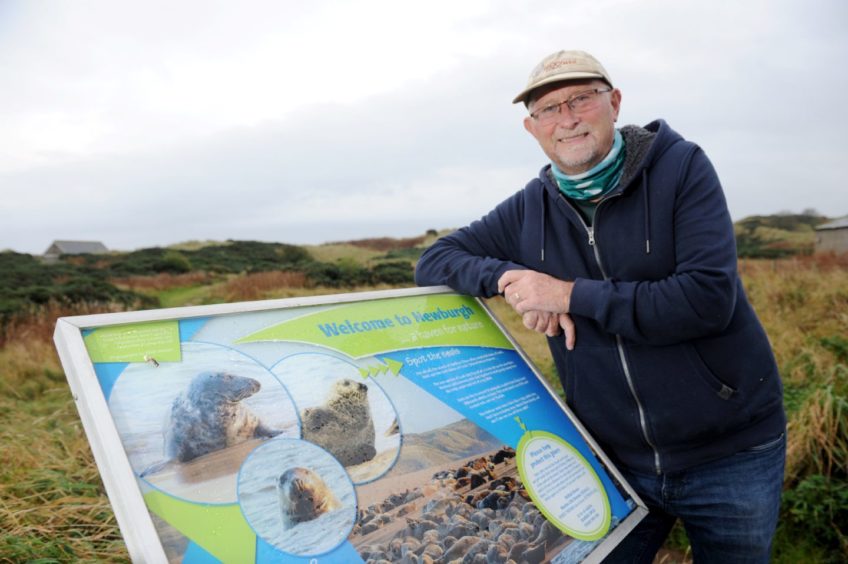Gayle goes seal-spotting at Newburgh beach – and shows how to enjoy the wildlife spectacle without disturbing the vast colony.
Shiny heads with huge glossy eyes are in abundance at Newburgh beach.
Curious, playful seals frolic and splash – and sometimes fight – in the sea and on the golden sands of the north-east beauty spot.
Hundreds of the creatures can be found at what’s known as the “Ythan haul-out”, the place they come ashore to rest, moult and breed.
At peak times, there can be more than 1,000 hanging out together in the vast colony.
I popped down to the beach at mid-tide to discover a group of grey seals swimming round the partially-submerged wreck of Halcyon, a boat which came ashore during a storm in 1854 with the loss of eight lives.
As I strolled along the sand, one big lad swam closer to the shore to check me out.
Nostrils flaring, he eyed me nosily before sweeping his lithe, slippery body underwater with a flick of his tail.
In the distance, on the south side of the Ythan estuary, I spotted hordes of seals, both grey and common, lying on a sandbank.
Had it been summer, I’d have imagined they were sunning themselves, but there wasn’t much warmth in the winter sun and a bitter wind had dragged the temperature down to a teeth-chattering 1C.
Seals are graceful swimmers, but on land it’s a different story, where they undulate along the ground in an ungainly, caterpillar-like motion.
They’re very vocal animals, emitting all kinds of bizarre grunts, barks, honks and eerie wailing noises which float on the breeze and drift across the dunes.
Watching them is mesmerising, but if you want to get a really good view, be sure to bring your binoculars.
Getting up close and personal is a no-no and recent reports of seal disturbances have prompted those who look after the reserve to campaign for better awareness.
If they’re disturbed, harassed or feel threatened, they stampede into the water, causing injuries and crushing smaller seals to death in the panic.
Watching them from the south side of the estuary at Newburgh beach won’t bother the animals and a great view is guaranteed.
The issue arises when people – some walking dogs – stray on to the haul-out, a protected site for the seals to rest and breed.
A good rule is that if you approach a seal and it raises its head, you’re too close and should back away.
Despite legal protection for the haul-out site and the threat of a hefty fine or even imprisonment for anyone harassing the seals, disturbances still take place.
“The vast majority of visitors respect the signs, but a few either don’t see them or perhaps think they know better and that the warning signs don’t apply to them,” said Gavin Clark, of Scottish Natural Heritage.
Lee Watson set up Ythan Seal Watch five years ago in a bid to raise awareness of how people should behave around seals and to prevent disturbances, whether by drones, dogs, boats or people getting too close.
“This year has been particularly bad with all pups born over winter dying because of visitor disturbance and behaviour on the site, all while ignoring warnings on the reserve not to approach seals,” said Lee.
“There are usually 2,000 to 3,000 seals on the haul-out, but due to the harassment this year the numbers are well down.”
The group aims to keep visitors safe – bearing in mind seals bite and carry disease.
Volunteer members also help tackle a huge issue for seals at the site – marine debris.
Sadly, many of the creatures become entangled in flotsam and jetsam and can become seriously injured.
The exciting news is that there’s a new viewing platform planned for the summer, offering the ideal place to spot seals safely.
NatureScot and Newburgh and Ythan Community Trust are at the helm of the platform project.
Trust secretary Ron Macdonald said: “The aim is to enhance the visitor experience in viewing the seals and by directing people to view them from the south Newburgh side to reduce disturbance.”
The car park will be redesigned, interpretation boards will be revamped and there will also be a new all-abilities path put in to replace the old boardwalk.
Repair work will also be undertaken at the existing viewing platform, which affords stunning views of the reserve and the Aberdeenshire coastline. This will involve marram planting to restore eroded areas of dune vegetation.
Until then, the advice from Lee and Ron to visitors is to enjoy watching the seals in action, but to be responsible about it.
In terms of when to spot them, Lee reckons low tide is best, but the chances are you’ll see a good few whatever time of day you head there.
- Anyone concerned about seals being harassed should contact Police Scotland on 101 and speak to the wildlife crime officer.
- Ythan Seal Watch is always on the hunt for volunteers. See the Facebook page for details. Please observe government coronavirus safety guidelines in all outdoor activities.
